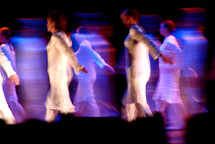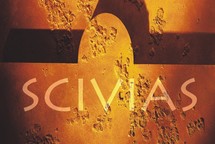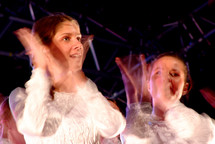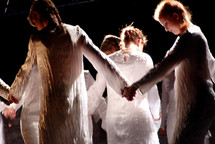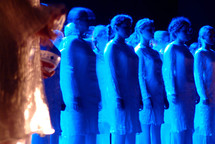Scivias
Chants unify
Press
... the stage became a place of colourful choral drawing ...
... virtuosic: flawless intonation, crisp sound, brilliant, with refined movement (harmonious, resembling dance perfectionism in concluding moments), free-flowing, almost auto hypnotic – defined by an energy flow of an utterly disciplined and ambitious team…
... the choir's performative skills are unique...
... the auditorium was in a state of delirium...
Delo
… perfection with their magic attraction …
… the profiled, refined, musically, choreographically and theatrically perfected performance evoked in us a mystery and magic of ceremonial festivities of indigenous beliefs …beautiful vocal instrument ... it is all perfect, disciplined ... voices are not only choral agents, but true narrators of life stories …
Primorski dnevnik
… the biggest artistic event of the closing year …
… a magnificent choir talent …
… a superb new age … a global musical experience …
… Karmina Šilec with Carmina Slovenica has transcended the boundaries of spiritual parcels, which formed over the centuries, and finally returned the (musical) world back into the realm of oneness, togetherness, and what is warmly ours ….
Primorske Novice
… the ritual of the evening of immensely skilled singers and musicians of Carmina Slovenica ...
Dnevnik
… the highest level of stage efficiency …
… a vocal stage for connoisseurs and experts…
… we have not seen so much singing clarity and stage beauty in Cankarjev dom for a long time …
Večer

